Are you curious about that funny red thing that sticks out the heads of chickens like a defiant mohawk? Spoiler alert, it’s called a comb or crest. The comb is a significant body appendage to the chicken, and it serves some pretty cool functions.
In this article, we’ll go over everything you need to know about combs and, most importantly, the nine types of chicken combs.
So buckle up, and let’s dive right in.
The Nine Types of Chicken Combs
Different chicken breeds have different kinds of combs. They include:
Single Comb

When folks picture a chicken’s crest, this here comb’s what comes to mind! Call it famous – call it iconic – either one works for us! This particular comb’s the real MVP among feathery friends because it’s easy to spot with its distinctive peaks.
Chicken breeds that sport this iconic comb include Ayam Cemani, Barnevelders, Faverolles, Leghorns, and Rhode Island Reds.
Buttercup Comb

It’s the Sicilian Buttercup that bears this crown. The Buttercup Comb looks like a dual variation of the single comb. However, the points on this comb come full circle to form a small crown.
Carnation Comb
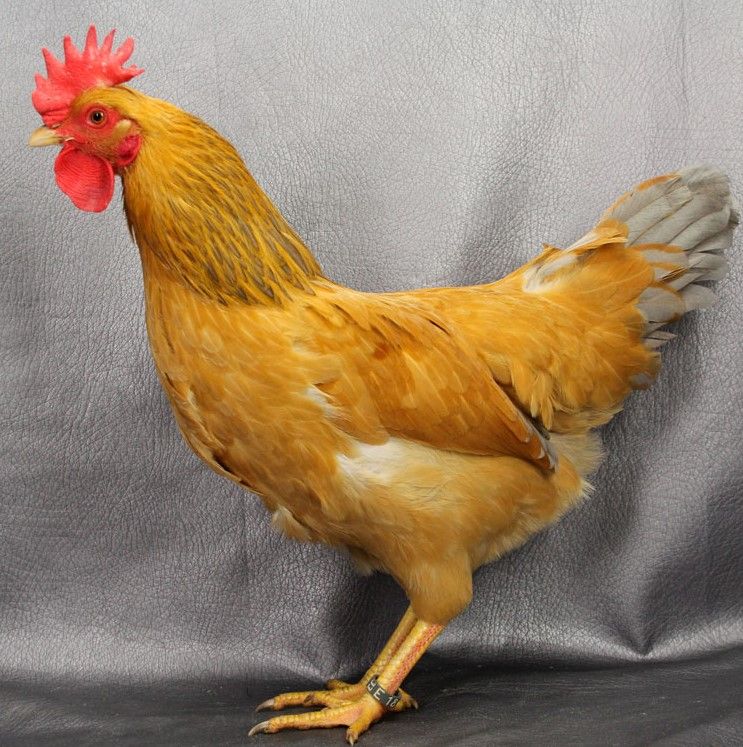
Carnation is a very rare comb type. There are extra points on this comb that stick out at right angles along the comb’s back. The Penedesenca and Empordanesa are the only two breeds that rock this crown.
Pea Comb

These combs are very small, and they’re excellent for chickens that live in climates with harsh winters. Brahmas, Ameraucanas, and Buckeyes have these combs.
Cushion Comb
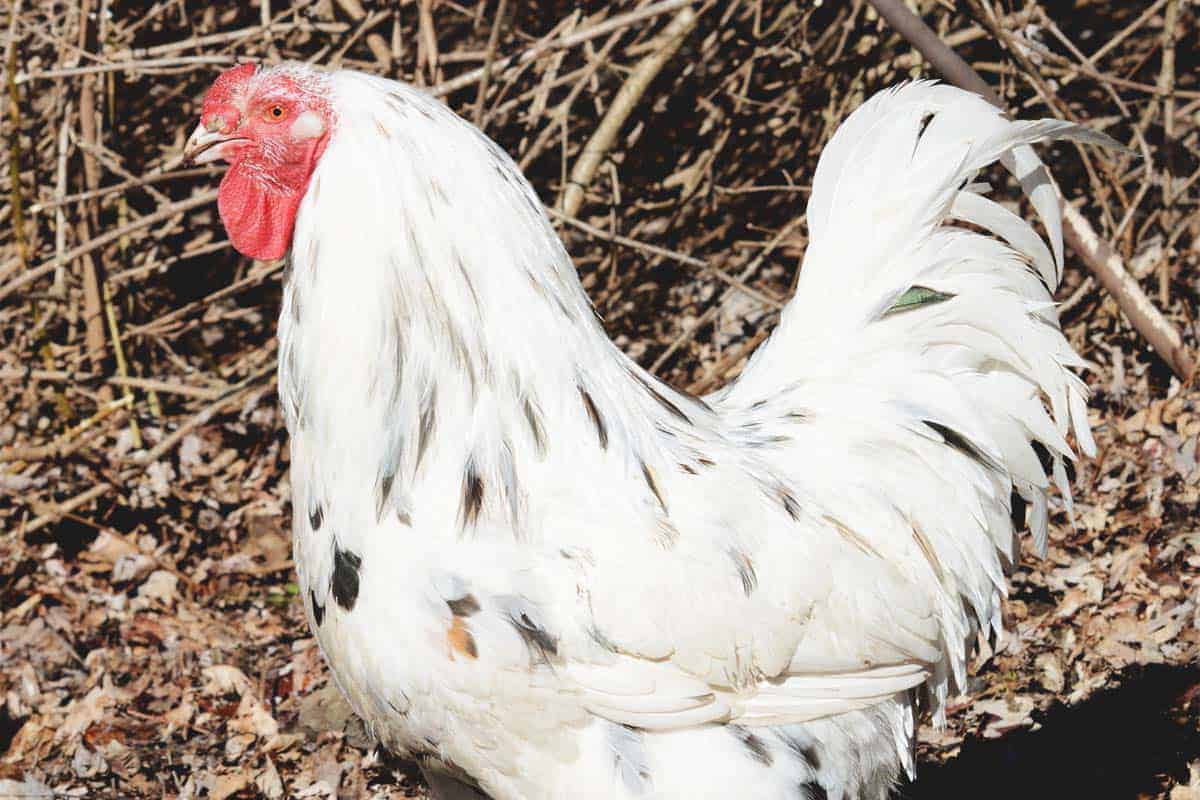
This is a much smaller version of the strawberry comb. It looks like a small cushion that sits forward on your chicken’s head. The Chanticleers breed has it.
Rose Comb
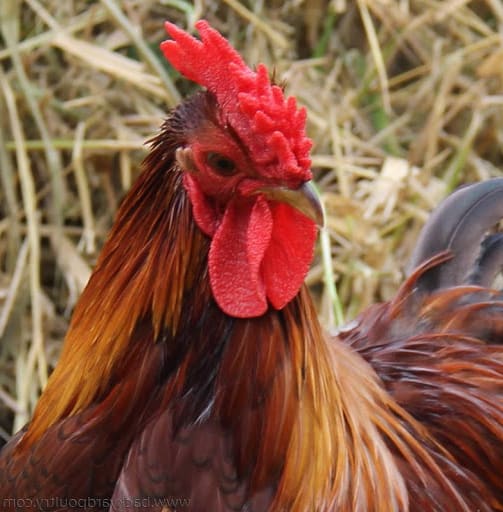
This comb sits very flat on your chicken’s head. It won’t get frostbite, so it’s ideal for climates with harsh winters. There should be a spike at the back of the comb. Rose-combed Bantams and Dominiques Wyandottes have this comb.
V Comb Comb
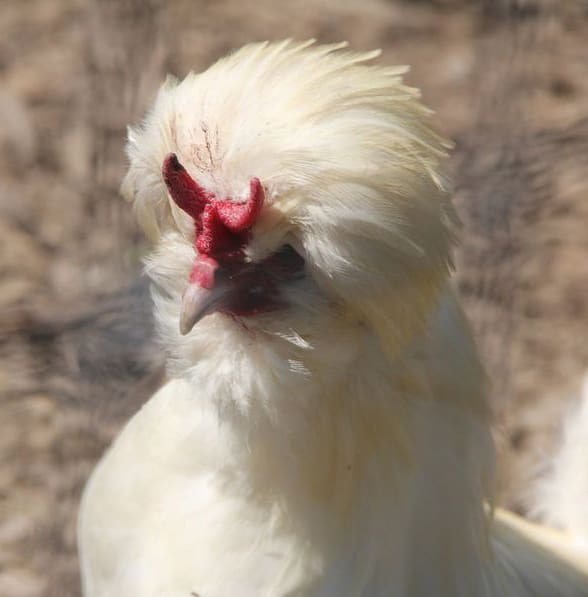
Known as the Devil’s Horn, the V comb is found in a select group of chickens. Breeds include the Sultan, Crèvecœur, and La Flèche.
Strawberry Comb

This chicken comb sits at a forward angle on your chicken’s head. It looks like a strawberry, and you can see it on Yokohama and Malay chickens.
Walnut Comb
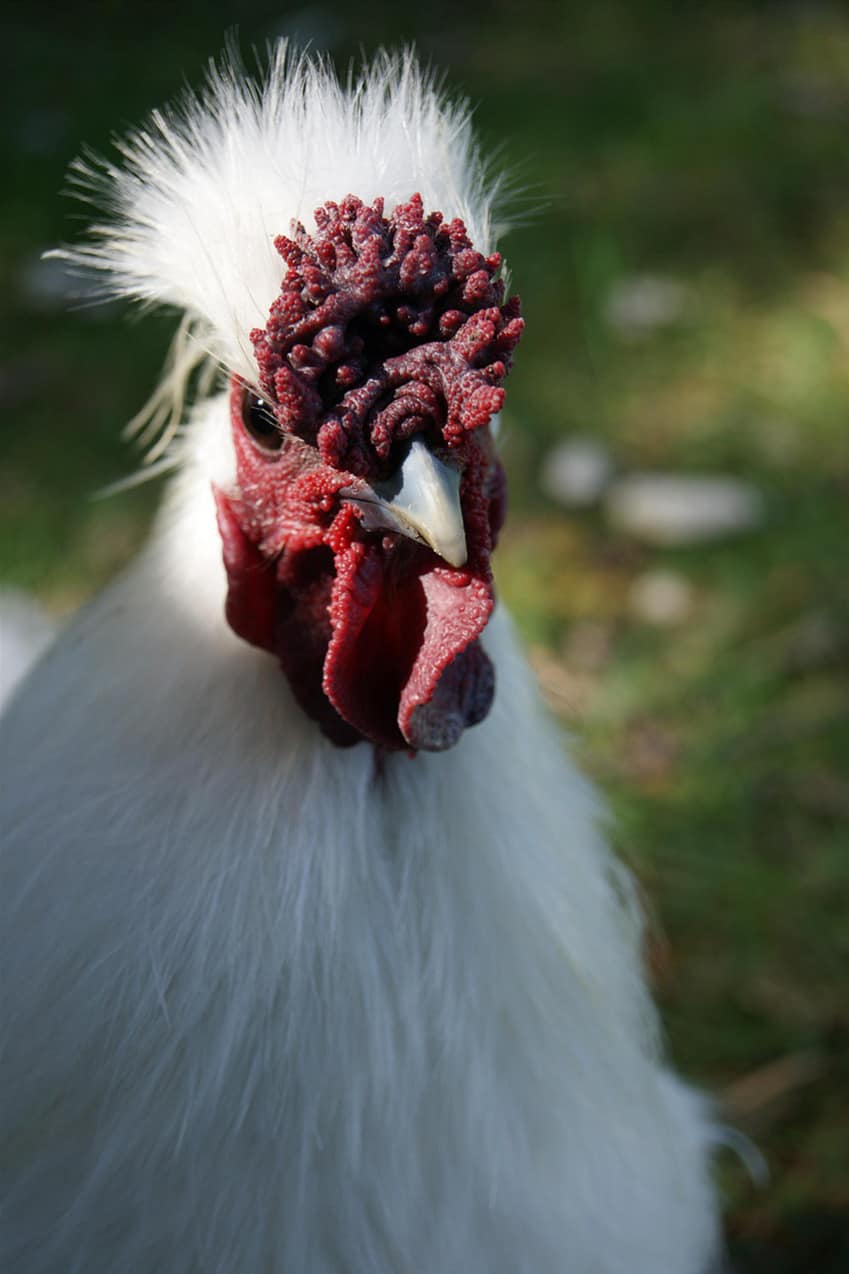
This comb forms a large walnut-shaped that sits forward on your chicken’s head. Orloff and Silkie have this comb.
Chicken Comb Uses
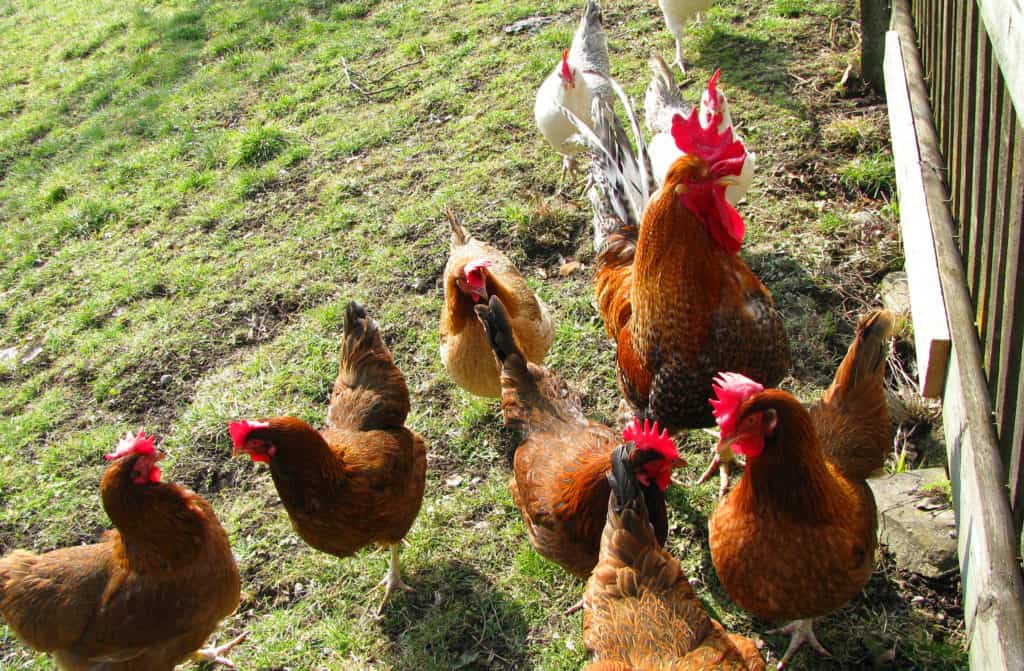
The chicken comb is widely considered to be an organ. It has several useful purposes associated with it.
Body Temperature Control
Chickens don’t sweat, so their comb and wattles help them regulate their body temperatures. When it’s hot out, the comb will help diffuse some of the heat to keep the chicken cool. During the winter months, it helps to retain body heat to keep the bird comfortable.
Establishing Dominance
Chicken hierarchy can get pretty intense – there are always going to be some birds who think they run the show. You know how it goes: big comb, big attitude! Typically, chickens with larger combs are more dominant and aggressive than chickens with smaller combs. This isn’t the rule 100% of the time, but it’s true for the majority of chickens.
Pullet Age
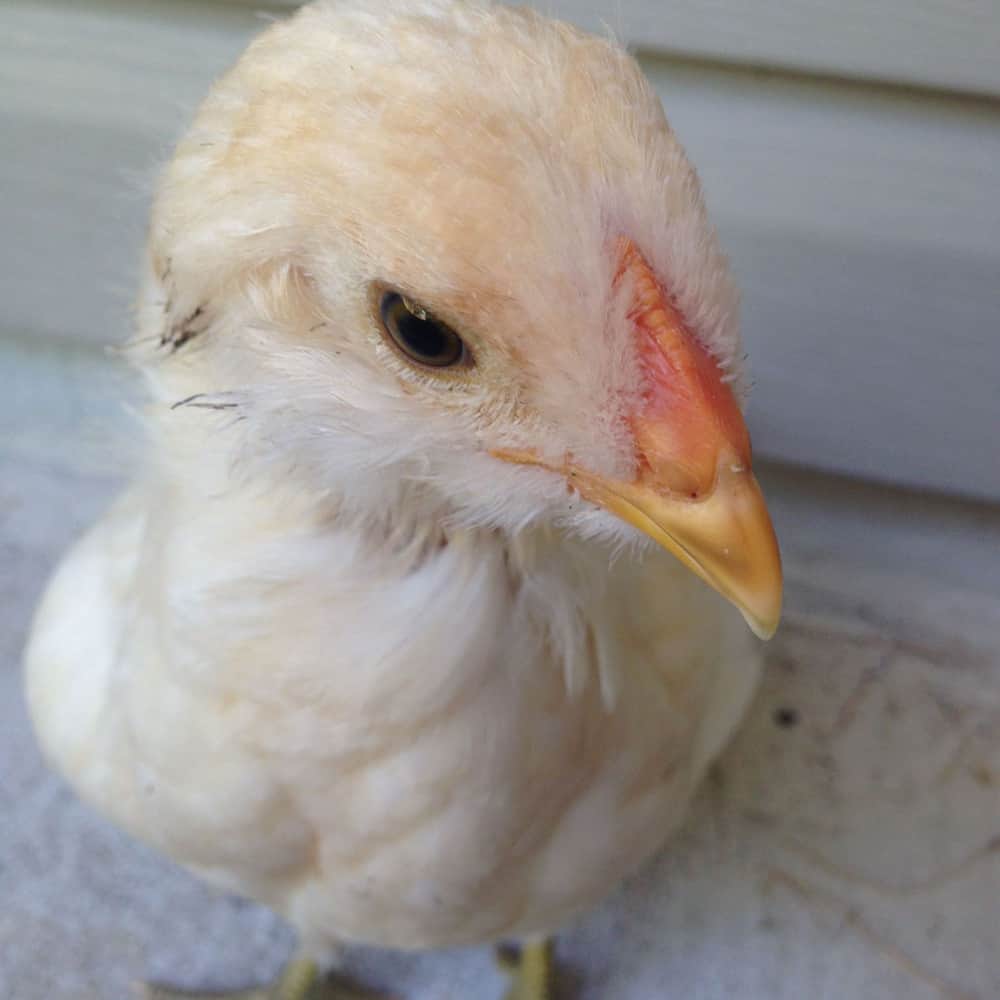
It can be challenging to determine your pullet’s age. In turn, it can be difficult to discern when they’re going to be old enough to lay eggs. A comb can help. The comb will grow bigger and turn purple or red as your pullet matures. This growth and color change are indicators that they’ll start to lay soon.
Health Indication
Your comb’s coloring can clue you into your bird’s health. A healthy comb is usually bright red, although this can vary depending on the chicken breed. A pullet may be light pink. If the comb is shrunken or pale, this can indicate health problems. It could mean your chicken has worms, is anemic, molting, or has heat exhaustion. A blue comb can mean your chicken has circulatory problems.
Sexual Attraction
Once your chicken reaches sexual maturity, their combs will grow. The wattles and combs are a sign of strength and vitality. A male chicken has a large and pronounced comb, while the females have smaller ones. Studies show that hens that have larger combs tend to lay more eggs.
Chicken Comb Health Issues
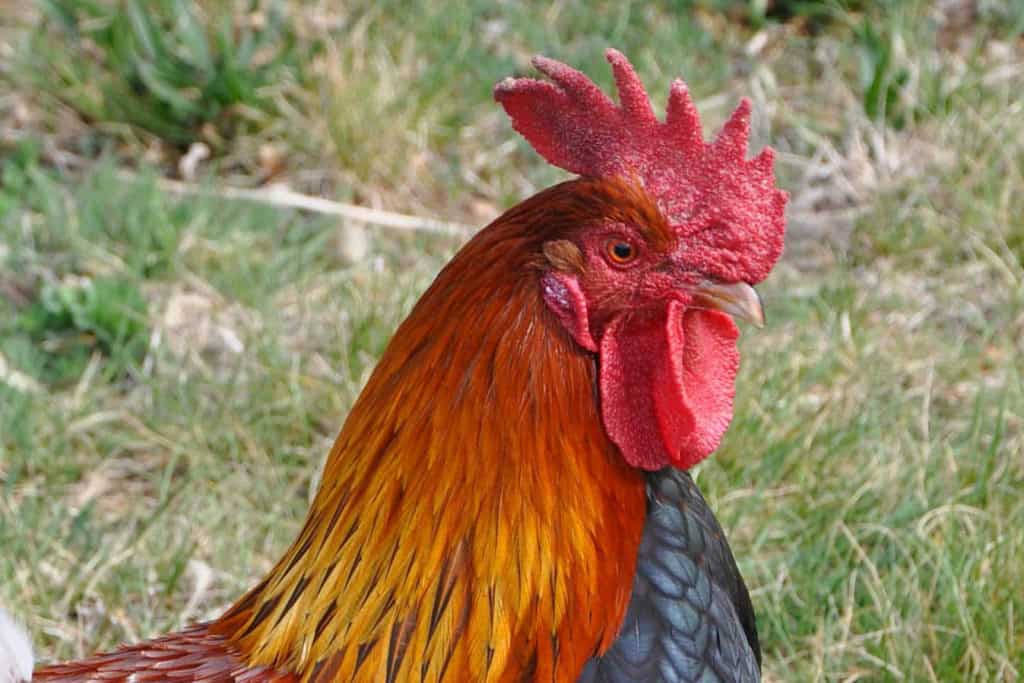
Chicken combs can suffer from a host of health problems. You want to address these issues quickly to stop them from getting worse.
Fowl Pox
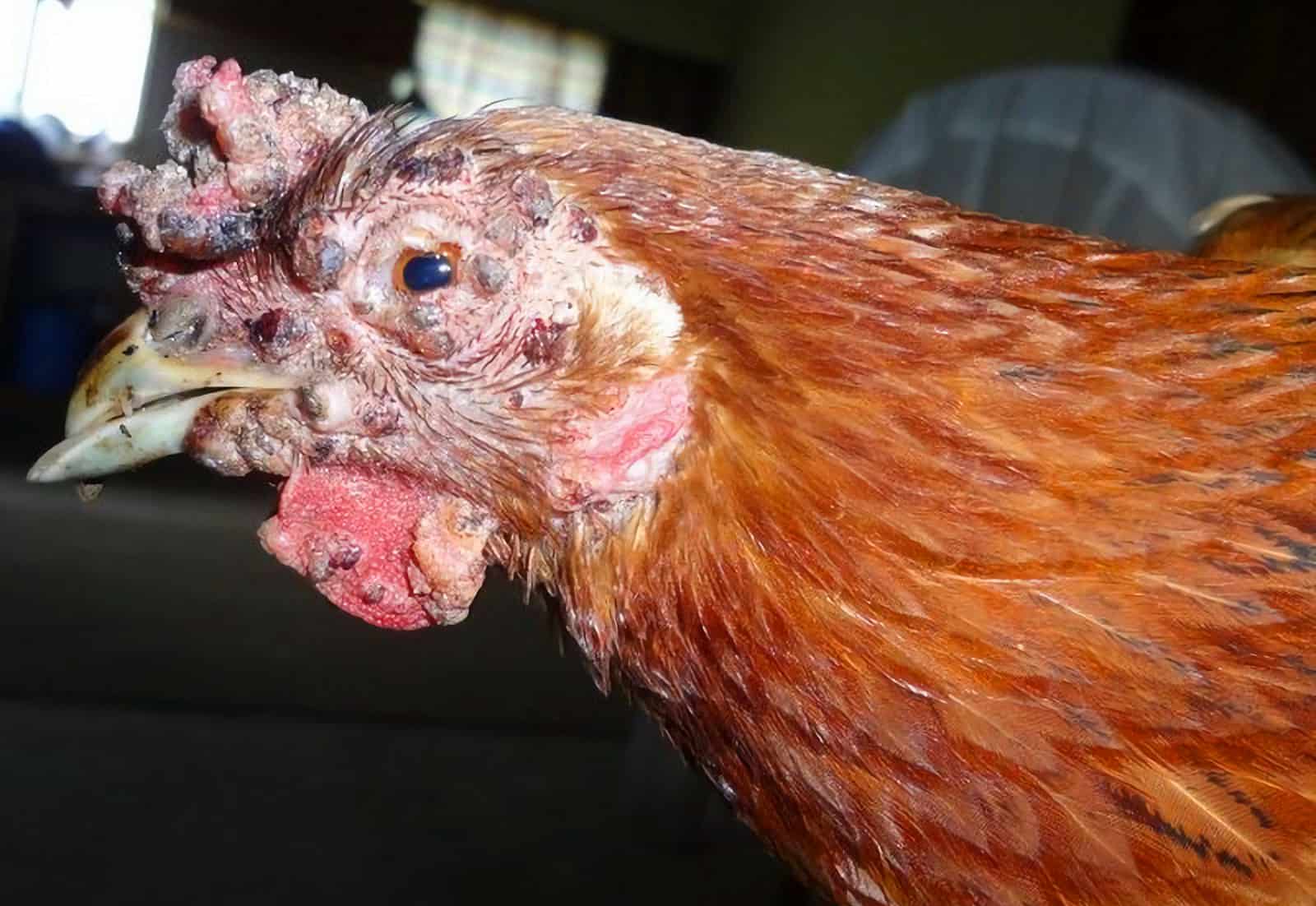
Oh man, fowlpox: it is quite the trouble! There are actually two types – wet and dry fowlpox. And yep, you guessed it – it’s a virus.
So basically, if your birds catch this bug, they could suffer from weight loss, decrease in egg production, and just feel tired all the time. The worst part? The affected areas won’t have any feathers (including the comb), so it’s easy to spot those unsightly gray or white lesions. Ugh, I know, gross! But hey, at least there’s some good news (kind of). With treatment, things should eventually improve. Though admittedly, it may take many moons before a full recovery.
Trust me, though; prevention is where it’s at here, folks. Invest in plant sprays to keep away bugs, and yeah, definitely consider getting those birdies vaccinated. [Fowl Pox in Chickens: Cause, Treatment and Prevention]
Frostbite

Chicken combs are particularly susceptible to frostbite. Here’s some advice: make sure their coop isn’t leaky, and drafts don’t mess around because that would not be fun for those cute birds.
Keeping things ventilated helps, but overall, just try making sure the place stays warm – we’ve got a complete guide on how to keep your flock cozy during winter if you need any details.
Now, minor cases usually fix themselves after a few days or so, but just remember that once the comb gets damaged due to frostbite, there’s no magic pill to repair it – sorry about that! All you can do is get rid of the dead stuff, which sounds even worse than it already was.
Remember, prevention is crucial in this case. Do everything you can to protect those feathery friends of yours before nature takes over.
Pecking
Hens can be a crafty bunch – if one steps out of line, another chicky might give her a good old-fashioned peck on the head. The problem is that the comb stands directly in the line of fire.
Sounds rough, right? But it could lead to a tiny tear-up top. Comb’s packed with plenty of veins. So, a nudge like this could spell trouble, literally. That goofball birdie will start drippin’ like a leaky tap. Not cool.
You want to stop the bleeding quickly. Simply press down hard where she bled – it should clot faster and quicker than a speeding bullet.
Listen closely, though – the flock knows best; if one bird takes a hit or falls ill, her buddies will gang up against her. They’ll try to drive the sick chicken out.
If one birdie shows signs of feeling under the weather, step in fast to assess the situation before things get serious. Keep calm, act swiftly, and your little pals will stay healthy and happy.
Worms
Your chicken’s comb will indicate other health problems. For example, worms are a common health problem with chickens. They’re also contagious. Your chicken’s comb will display a reaction to an infestation of worms. It’ll slowly drain the vibrant red coloring. Instead of standing up, it’ll hang limp. These are two big signs your chicken has something wrong with it, health-wise.
How to Keep Your Chicken’s Comb Healthy

You want to keep your chicken comb as healthy as possible. There are several ways you can accomplish this, and we outlined them below.
Look for Excessive Pecking
Sometimes, several chickens will gang up on one and peck them excessively. This can be bad for your chicken’s health, especially if they concentrate on the comb.
You want to remove any chicken that seems to be getting picked on. You can put smaller or underweight chickens in their own pen. Allow them time to heal and get healthy before you reintroduce them back into the main flock.
Antibiotics
Open sores or blisters are prone to infection. Make sure you don’t accidentally pop any blisters, and pay attention to open areas. Speak to your veterinarian and see if they recommend any antibiotics. This could be to prevent infection or help your chicken heal faster. You can add a layer of Vaseline to large combs during the winter to prevent frostbite.
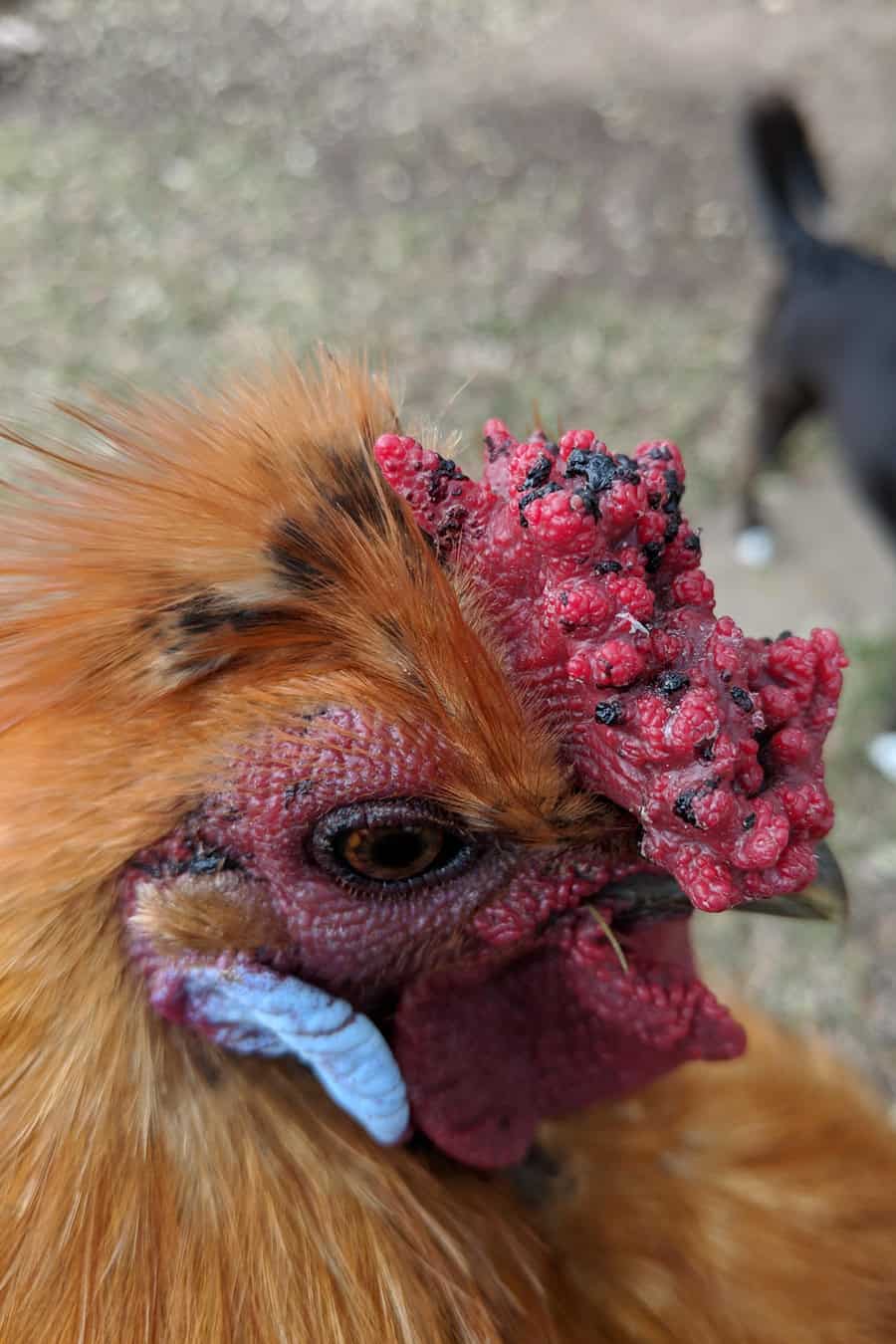
Infection or Dead Tissue
Your veterinarian should remove any dead or dying tissue from your chicken’s comb. They’ll also tell you how to best prevent infection and bring the comb back to full health. If there is an infection, they may recommend you apply topical antibiotic ointment until it heals.
Color and Texture
Any change in your chicken comb’s color or texture is an indicator that something isn’t right with your chicken. Keep a close eye on all of your chicken’s combs. They should be a healthy color without any flaky or dry areas. There should be no lesions, blisters, or torn tissue.
Frequently Asked Questions
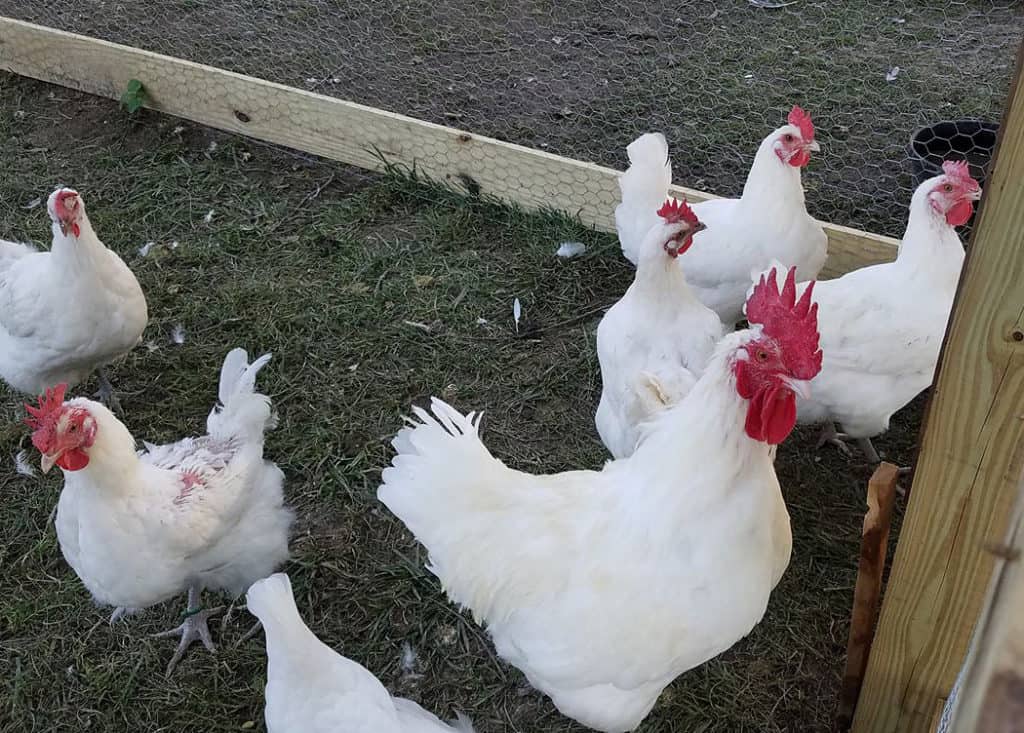
Do Chickens Lose Their Combs?
Normally, no. The comb is an organ that is packed with blood vessels. Unless your chicken is sick, the comb shouldn’t shrivel up or look unhealthy. Your hens’ comb may reduce in size when they stop laying eggs, but they won’t completely lose the comb.
Can a Chicken Comb Grow Back?
Well, the short answer is no. But don’t worry; there’s still hope!
You see, even though the comb itself may not grow back, the wound it leaves behind can certainly heal over time. And that’s something to crow about (pun intended)!
With proper care, the area where your bird’s comb was damaged can heal over time, but it may not regain its original size and vitality. Just think of it like watching grass grow – slow at first, but before you know it, things look greener than ever.
Can You Eat Chicken Combs?
Yes. While they don’t pack a ton of flavor punch, crisped-up combs make for a tasty treat. Just make sure to cook them well so they’re nice and crispy!
Conclusion
So, fellow feathered friends, take note: taking care of those combs is serious business. By keeping an eye on them and ensuring your birds stay healthy overall, you’ll give them a leg up (pun definitely intended) on life. Trust me; they’ll show you their appreciation by laying down some eggs for you!
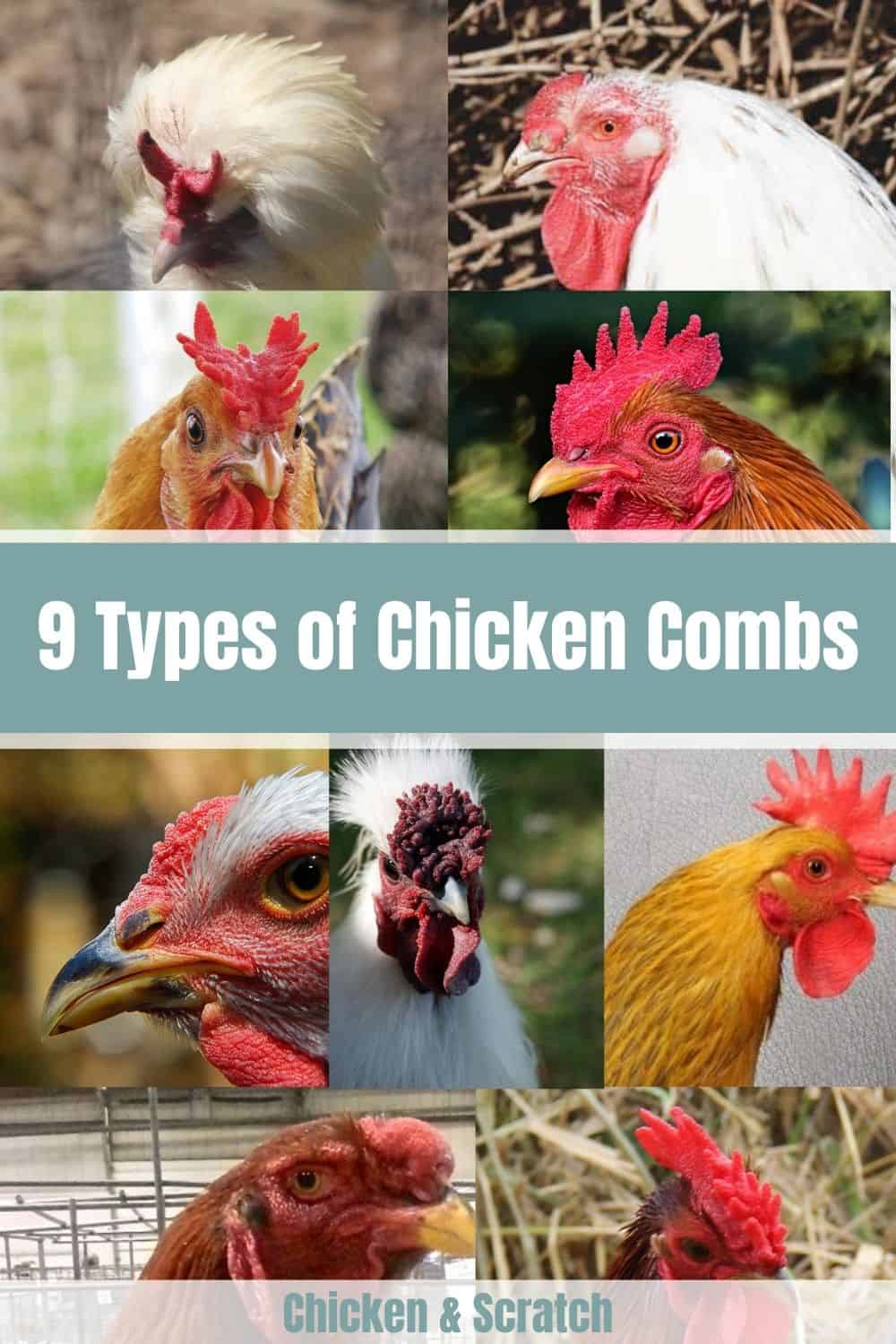

Joseph Hudson has been raising chickens for over 15 years. In 2018, he completed the Agriculture & Natural Resources program at Mt. San Antonio College. He currently raises over 1400 chickens on his 7.5-hectare farm. He keeps sharing his experience on raising healthy and happy chickens on Chicken Scratch The Foundry.
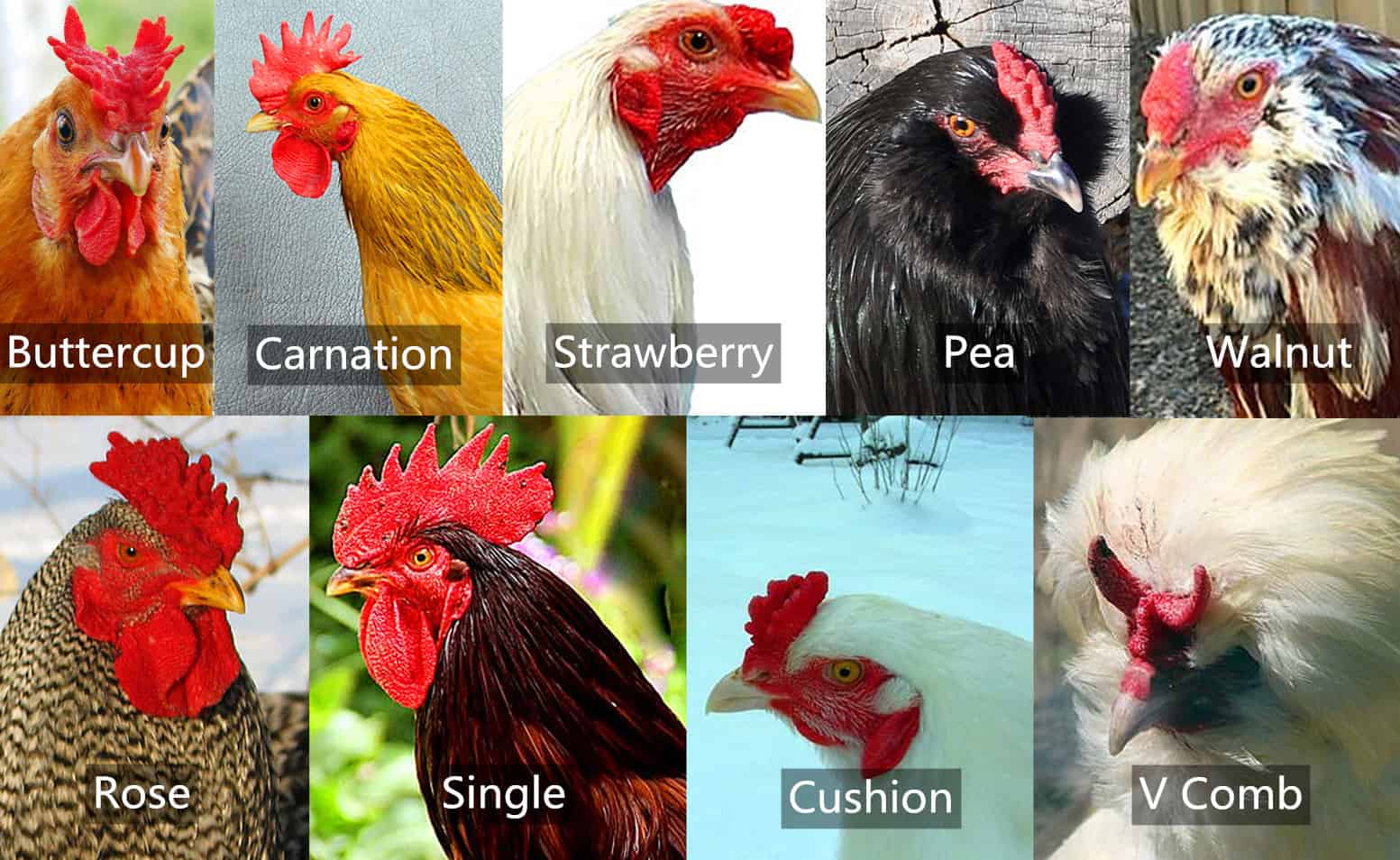







This was the best article. I’m a 4-H leader and this helped me so much create the material for a meeting. Thank you so much!